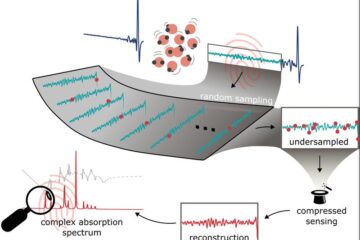Missing sugar molecule raises diabetes risk in humans

The findings are published in the Feb. 24 online edition of The FASEB Journal, a publication of the Federation of American Societies of Experimental Biology.
Corresponding study author, Jane J. Kim is an assistant professor in the UCSD Department of Pediatrics and a member of the Pediatric Diabetes Research Center and Rady Children's Hospital-San Diego, a research and teaching affiliate of the UCSD School of Medicine. Kim said the findings represent the first documented evidence linking the sugar production to insulin and glucose metabolism problems associated with diabetes.
“It opens up a new perspective in understanding the causes of diabetes,” said Kim. “Given the global epidemic of obesity and diabetes, we think that these findings suggest that evolutionary changes may have influenced our metabolism and perhaps increased our risk of the disease.”
Type 2 diabetes is caused by both genetic and environmental factors, such as a fatty diet and lack of exercise, that result in progressively dysfunctional pancreatic beta cells, elevated blood sugar levels due to insulin resistance and eventual health complications, sometimes fatally so. Diabetes is an expanding problem, nationally and globally. In the United States, more than 25 million adults and children – almost nine percent of the population – have diabetes, according to the American Diabetes Association. Another 79 million Americans are estimated to be prediabetic. Worldwide, roughly 285 million people are believed to have the disease.
Sialic acids are sugar molecules found on the surfaces of all animal cells, where they act as vital contact points for interaction with other cells and with their surrounding environment. Virtually all mammals produce two types: N-acetylneuraminic acid (Neu5Ac) and N-glycolylneuraminic acid (Neu5Gc).
Humans are the exception. For reasons lost in the mists of evolution, a mutation in a gene called CMAH occurred 2 to 3 million years ago, inactivating an enzyme in humans that catalyzes production of Neu5Gc by adding a single oxygen atom to Neu5Ac.
Researchers compared two groups of mice: one with a functional CMAH gene, the other with an altered CMAH gene similar to the human mutation. Both groups of mice were fed a high-fat diet. Mice in both groups became obese and developed insulin resistance. However, only mice with the CMAH gene mutation experienced pancreatic beta cell failure – the cells that make and release insulin, a hormone that controls blood sugar levels.
Kim said the findings help refine understanding of why obese humans appear to be particularly vulnerable to type 2 diabetes, and also suggest that current animal models used to study diabetes may not accurately mirror the human condition. In clinical terms, she said further research to determine how sialic acid composition affects pancreatic beta cell function may reveal new strategies to preserve the cells, improve insulin production and prevent diabetes.
Co-authors of the study are Sarah Kavaler and Alice Jih, UCSD Department of Pediatrics and Rady Children's Hospital-San Diego; Hidetaka Morinaga and WuQuiang Fan, UCSD Department of Medicine; Maria Hedlund and Ajit Varki, UCSD departments of Medicine, Cellular and Molecular Medicine and UCSD Glycobiology Research and Training Center.
Funding support was provided by the National Institutes of Health.
Media Contact
More Information:
http://www.ucsd.eduAll latest news from the category: Health and Medicine
This subject area encompasses research and studies in the field of human medicine.
Among the wide-ranging list of topics covered here are anesthesiology, anatomy, surgery, human genetics, hygiene and environmental medicine, internal medicine, neurology, pharmacology, physiology, urology and dental medicine.
Newest articles

How evolution has optimised the magnetic sensor in birds
The magnetic sense of migratory birds is probably based on the protein cryptochrome 4, and a genetic study has now provided further support for this theory. A team of researchers…

Molecular Fingerprint Beyond the Nyquist Frequency
Ultrafast laser spectroscopy allows the ascertainment of dynamics over extremely short time scales, making it a very useful tool in many scientific and industrial applications. A major disadvantage is the…

High-energy-density aqueous battery based on halogen multi-electron transfer
Traditional non-aqueous lithium-ion batteries have a high energy density, but their safety is compromised due to the flammable organic electrolytes they utilize. Aqueous batteries use water as the solvent for…





















